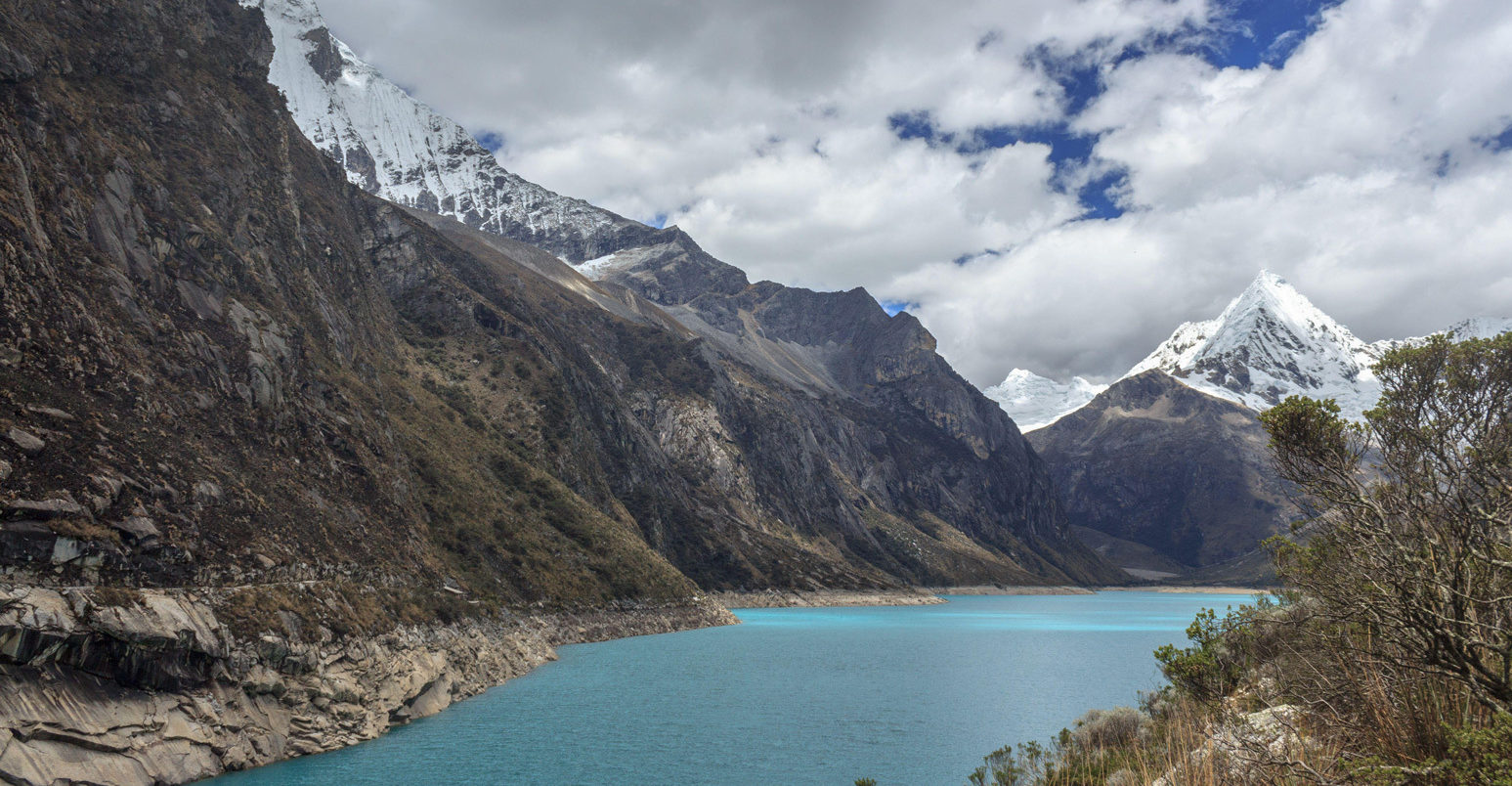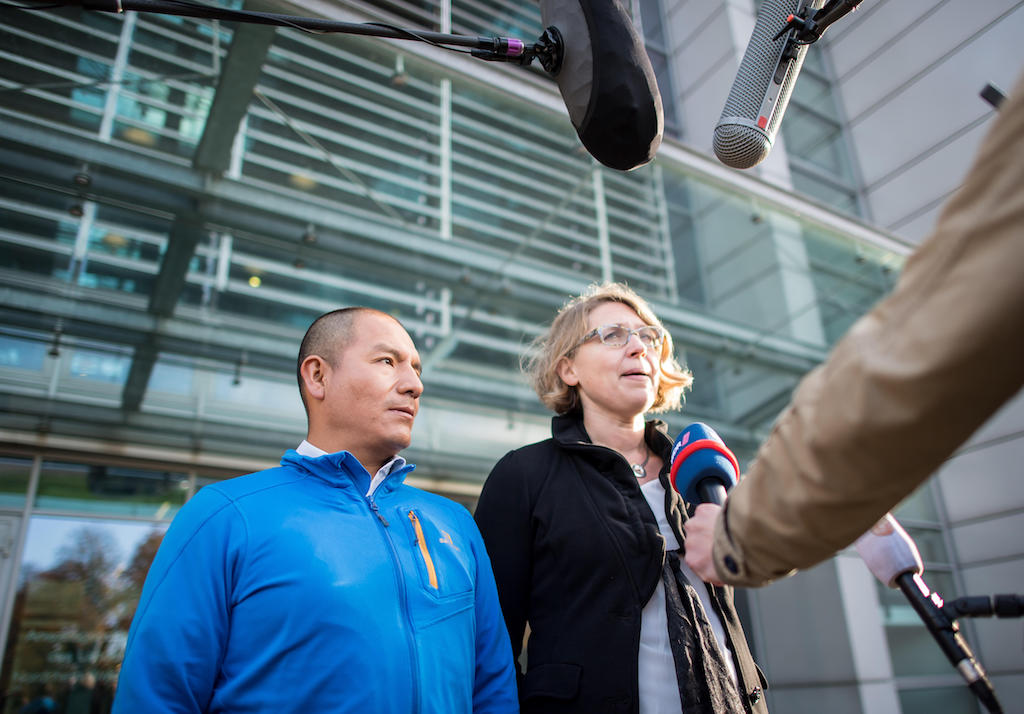
Guest post: How climate change threatens a Peruvian city with ‘glacial flood’

Guest authors
02.04.21
Guest authors
04.02.2021 | 4:00pmTheworldwide retreat of mountain glaciersis one of the most visible impacts of climate change. In the wake of receding glaciers,thousands of lakeshave formed and expanded. These lakes threaten the communities living below them with tsunami-like waves known as “glacial lake outburst floods”.
One such lake,Palcacocha, sits high in the Peruvian Andes and is notorious as one of the world’s greatest flood risks. It threatens tens of thousands of people living downstream.
This looming catastrophe has raised questions about the role of climate change in creating this flood hazard.
Our new study, published inNature Geoscience, is the first to assess the role of climate change in changing an outburst flood hazard. By establishing this link, our research provides new evidence for an ongoinglegal casebrought against RWE, which aims to hold the German utility firm responsible for its historical contribution to climate change.
‘Timebomb’
As the Palcaraju glacier in the Andes has melted, Lake Palcacocha has expanded rapidly – approximately34-fold by volume since 1990(pdf). The meltwater is gradually filling the valley vacated by the retreating glacier.
Labelled by the media as a “deadly flood timebomb”, the risk to downstream communities persists despitethe efforts of local authoritiesto drain and dam the lake.
The view that Lake Palcacocha poses a serious flood risk is well supported byscientific research. These studies show that were an outburst to occur – most likely triggered by an avalanche – flood waters would reach Huaraz, a downstream city of 120,000 people.
Census data suggests that22,500 inhabitants live in the pathof a potential floodwithin 80 minutesof an outburst.
Palcaraju is just one of thousands ofglaciers around the worldthat are retreating as the climate warms. The characteristics of each individual glacier, along with the local climate, will determine how it responds to Earth’s rising temperatures.
In our study, we accounted for these factors and considered all steps of the causal chain – from emissions of greenhouse gases to the present-day flood risk.
Quantifying the role of climate change
To assess the human influence on the flood hazard from Lake Palcacocha we considered in turn:
- The role of greenhouse-gas emissions in the change in temperature around Palcaraju glacier.
- The influence of this change in temperature on the retreat of the glacier.
- The impact of the resultant expansion of Lake Palcacocha on the flood hazard to which the people of Huaraz are exposed.
Previous researchhas established that virtually all global temperature rise since the mid-19th century is the result of greenhouse-gas and aerosol emissions from human activity. Given spatial variation in temperature trends, we first tested whether this relationship between human influence and warming held true in the region around Palcaraju glacier.
Applying methods used in theIntergovernmental Panel on Climate Change(IPCC)special report of global warming of 1.5C, we established that 95% of the observed temperature change around the glacier is the result of human-caused climate change.
We then considered what role this temperature change has played in the retreat of Palcaraju glacier and, therefore, in the expansion of Lake Palcacocha.
Our results show that the observed retreat would not have happened without human-caused warming. Further, our central estimate is that 100% of the retreat is due to the temperature trend since 1850. In other words, in the absence of climate change, it is as likely that the glacier would have lengthened as it is that it would have retreated.
Having established the role of climate change in the dramatic expansion of Lake Palcacocha, we considered how this has changed the outburst flood threat posed by the lake.
Applying two independent “outburst flood hazard” ranking indices, the smaller lake of the 19th century is categorised as having a “medium” hazard. Subsequent growth has raised the lake to the highest hazard level. In response, local authorities have been compelled toimplement hazard mitigation measures(pdf).
These findings establish a direct link between greenhouse gas emissions and the growing flood hazard to which Huaraz is exposed. The need to implement protective measures now – as well as any potential damages caused by flooding in future – can, therefore, be linked to climate change for the first time.
Early climate change impacts
The people of Huaraz have experienced the deadly threat posed by Lake Palcacocha once before. In 1941, adevastating outburst floodfrom the same lake destroyed one-third of the city, causing at least 1,800 fatalities and possibly多达4000.
Our research shows that the emergence of human-induced climate change in the early 20th century initiated the retreat of Palcaraju glacier and the expansion of Lake Palcacocha, giving rise to the dangerous setting depicted in the photographs.
Our results indicate, therefore, that this mid-20th century event was one of the earliest fatal impacts of climate change to have been identified.
Setting a legal precedent?
Our findings offer new evidence relating to anongoing lawsuitin the German courts.
In this case, Saúl Luciano Lliuya, a farmer and mountain guide from Huaraz, suedRWE– a German energy utility andEurope’s largest carbon dioxide emitter– seeking compensation for a portion of the costs of measures to reduce the flood risk from Lake Palcacocha.

The lawsuit argues that RWE is liable for part of the costs of building flood defences, in proportion to their contribution to historical greenhouse gas emissions. As such, the case hinges on the existence of a causal relationship between climate change and the need to build flood defences.
The lawsuit is now in an evidence-gathering phase, in which scientific evidence about this causal relationship may be considered.
Lawyers have previouslyheralded climate change attribution scienceas a fundamental source of evidence for climate-related lawsuits.
And, although evidence from attribution research has not yet entered widespread use in climate lawsuits, climate scientists now possess the tools to provide evidence about the role of greenhouse gas emissions in causing specific impacts.
For example, scientists previously published astudyinvestigating the role of climate change in Japan’s 2018 summer heatwave. The research found that a heatwave as intense as that of summer 2018, in which over 1,000 people died, could not have occurred without climate change
Such studies add to thegrowing body of evidence律师在他们的disposal on which to base legal claims for compensation.
Ongoing threat
Glacial lake outburst floods are already a major hazard as mountain areas. The ongoing retreat of glaciers will threaten growing numbers of communities. Our findings provide clear evidence that the threat to life from Lake Palcacocha is a direct consequence of human-caused climate change.
Even as the impacts of climate change continue to accumulate globally, there remainsno comprehensive assessmentof what the climate change impacts experienced to date are.
Understanding which events are the consequence of human activity has assumed growing significance and research on this topic may inform litigators and the courts, support policymakers in prioritising adaptation measures, andrefine estimates of the economic impactsof climate change.
Stuart-Smith, R. F. et al. (2021) Increased outburst flood hazard from Lake Palcacocha due to human-induced glacier retreat, Nature Geoscience,doi:10.1038/s41561-021-00686-4. (This link provides free access to the full paper.)
-
Guest post: How climate change threatens a Peruvian city with ‘glacial flood’
-
Guest post: The lawsuit that connects a melting Peruvian glacier to Europe’s biggest emitter

